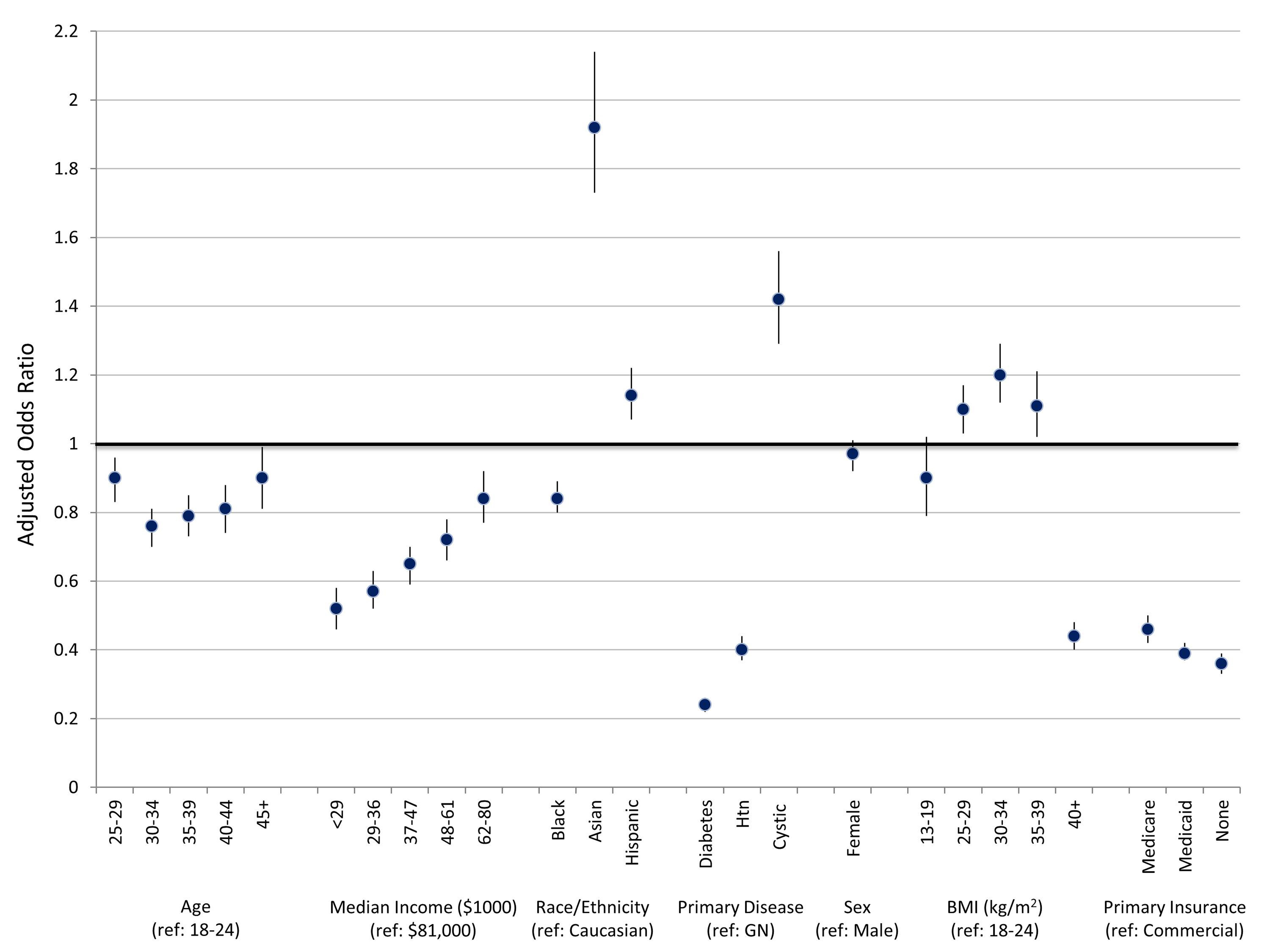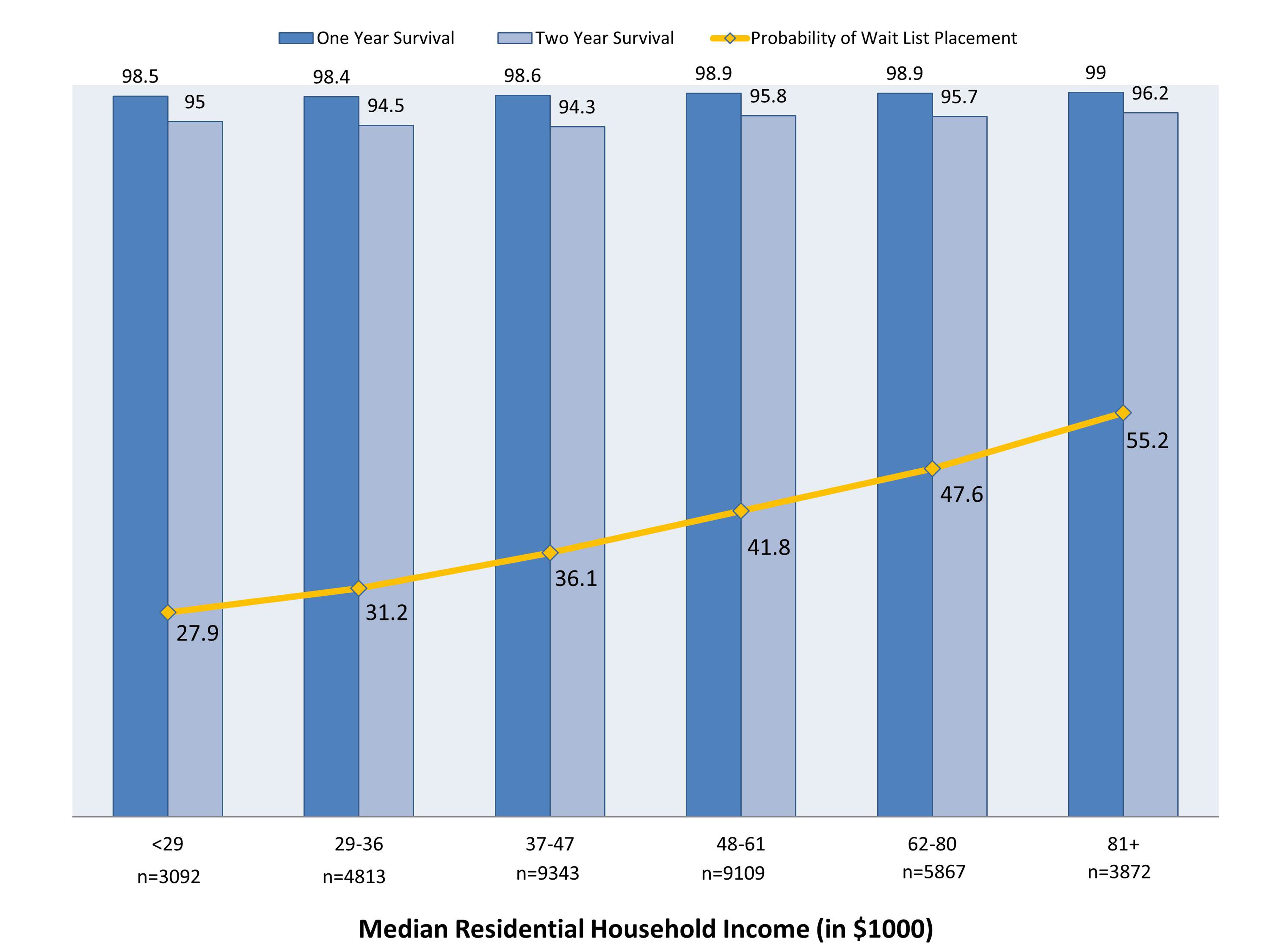Profound Opportunities Lost: Patients with High Priority for Ideal Donor Kidneys That are Not Placed on the Kidney Transplant Waiting List
1Cleveland Clinic Foundation, Cleveland, OH, 2Columbia University, New York, NY
Meeting: 2021 American Transplant Congress
Abstract number: 107
Keywords: African-American, Allocation, Kidney transplantation, Survival
Topic: Clinical Science » Public Policy » Non-Organ Specific: Public Policy & Allocation
Session Information
Session Name: Potpourri of Public Policy and Allocation
Session Type: Rapid Fire Oral Abstract
Date: Sunday, June 6, 2021
Session Time: 4:30pm-5:30pm
 Presentation Time: 4:50pm-4:55pm
Presentation Time: 4:50pm-4:55pm
Location: Virtual
*Purpose: The national Kidney Allocation System(KAS) prioritizes patients with high (top 20%) Estimated Post-Transplant Survival (EPTS) with expedited access to high quality deceased donor kidneys. The primary aim of this study was to evaluate the proportion and characteristics of ESKD patients that would qualify with top 20% EPTS scores but are not placed on the kidney transplant waiting list.
*Methods: The study included adult (18+ years) ESKD patients in the United States Renal Data System on the waiting list or dialysis who qualify for top 20% EPTS from 12/4/2014-12/31/2016. We compared characteristics and outcomes of patients that were and were not placed on the transplant waiting list.
*Results: There were 36,934 patients with top 20% EPTS score with mean age=32.0 years(std=8.0), 55% male, 38.9% non-Hispanic Caucasian, 32.0% African American and 19.9% Hispanic. Of these, 14,954(40.5%) were on the waiting list and independent factors associated with reduced likelihood of waitlist placement included diabetes(Adjusted Odds Ratio[AOR]=0.24,95%CI 0.22-0.26), African American race(AOR=0.89,95%CI 0.80-0.84), lowest residential income quintile(AOR=0.52,95%C.I.0.46-0.58), non-commercial insurance, end-stage renal networks and comorbidities. Results persisted excluding patients with any documente marginal contraindications including morbid obesity. Two-year survival for patients not on the waiting list was 95%.
*Conclusions: There are substantial numbers of ESKD patients that would qualify for top 20% EPTS status not on the waiting list when they would receive prioritization to ideal donors. Non-listing for patients that are likely ideal transplant candidates were markedly reduced for African Americans, non-privately insured and patients in lower income communities. These lost opportunities may have profound impact on patients’ long-term prognoses. Efforts to expedite care for qualifying candidates are needed and polices automating transplant referral for these patients should be considered.
To cite this abstract in AMA style:
Schold J, Huml A, Poggio E, Sedor J, Husain S, King KL, Mohan S. Profound Opportunities Lost: Patients with High Priority for Ideal Donor Kidneys That are Not Placed on the Kidney Transplant Waiting List [abstract]. Am J Transplant. 2021; 21 (suppl 3). https://atcmeetingabstracts.com/abstract/profound-opportunities-lost-patients-with-high-priority-for-ideal-donor-kidneys-that-are-not-placed-on-the-kidney-transplant-waiting-list/. Accessed December 29, 2025.« Back to 2021 American Transplant Congress


